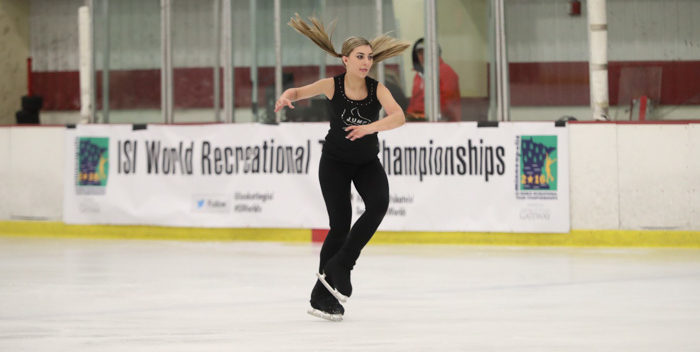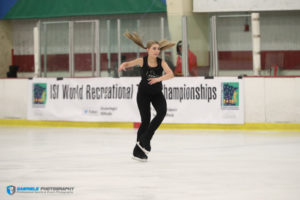Axel Tips from a Pro
Axel Tips from a Pro
by David Santee
The Axel is one of the most challenging moves to perform and teach in figure skating. This jump is one of the important milestones that skaters strive for and the accomplishment is one that will last in each skater’s memory.
What makes an Axel such a challenge? First, it’s the only jump that takes off on a forward edge; therefore, an extra half-turn is required to complete it. Because of this, an Axel can take longer to learn than most jumps. It is also the gateway to the double jumps, in which a snap into the rotation becomes a factor. With other single jumps, the rotation can be managed in the air without a lot of effort. The psychology of being able to perform an Axel is as significant as the physical struggle to achieve it, and just as important to skaters’ confidence in their skills.
In my skating career, I was fortunate enough to be able to land an Axel, a double Axel and a triple Axel. The principles that I learned and now teach on the single Axel apply to both the double and triple. I call these principles “Dave’s Rules of Jumping.”
Leaving the Runway
I assign duties for arms, skating leg and free leg to get into the air. The skating leg is the power leg, generating the lift. The free leg extends through, helping with both the lift and direction. The arms come down and through, helping with the direction and rhythm.
Lift and Turn
This is my basic rule of jumping. I ask my students if they have ever seen a small triple Axel on TV or in person. The answer, of course, is no. There is no way that a skater can rotate three and half times in the air without the time to do it. The more lift you can generate on the takeoff, the more time you will have to turn in the air. This really applies to the single Axel when the skater is first learning to snap into a tighter rotation.
Jump to Your Target
Although there are a variety of ways to set up an Axel, the actual pattern of the jump is very simple. Because of the force of the free leg coming through, if the skater jumps in to the circle, it becomes more difficult to stay straight in the air. Many coaches will start an Axel from a standstill because it forces a skater to jump out instead of around. The idea of jumping through helps the skater stay straight when it comes time to snap into the rotation.
Rotate in the Air
Pieter Kollen is one of the best jump technicians. He talks about the arc of jumping. This refers to where the actual jump rotations should occur on singles, doubles, triples and quads. He says that on a single jump, the rotation starts at 8 on a scale of 1 to 10, with 10 being the top of the jump. What this means is that there is a lot of time to lift into the air before you have to turn. The extension of the free leg through will help the lift as well as the pattern. I do an exercise with the skaters that I call a “fake Axel.” The skater will extend his or her free leg through all the way, then snap into a back scratch spin before a strong checking-out motion. This gives the skater an organized approach to the three main elements of the jump: the lift, the snap and the landing. All we are missing is the explosion into the air off the skating foot.
Back Scratch Spin
This is the position in the air for multi-revolution jumps. If skaters practice a back scratch spin regularly and try to translate the feeling to the top of the jump, they’ll have a much more efficient way of rotation. Often, we see skaters try to fling their arms around to generate rotation, but all that does is get the skater crooked.
Safe at Home
The strong checkout will complete the jump and make the skater and coach very happy. I feel that a good checkout is a state of mind. If a skater has the desire to land the jump and is aggressive on the checkout, then good things usually happen.
My coach, Evy Scotvold, used to say that a good jump takes twice as long to learn as a poor one. The Axel is a prime example of patience and fundamentals combining to make for a quality jump. Take the time to understand the mechanics of the Axel, and you will enjoy the reward of a milestone accomplished.
David Santee, a two-time Olympian and 1981 World silver medalist, is the skating director at Oakton Ice Arena in Park Ridge, Ill.

 MY COACH ROCKS
MY COACH ROCKS TEAMS IN SYNC
TEAMS IN SYNC EXPRESS YOURSELF
EXPRESS YOURSELF FOCUS ON ARCHIVES
FOCUS ON ARCHIVES COMPETITORS’ CORNER
COMPETITORS’ CORNER NEWS & NOTES
NEWS & NOTES







